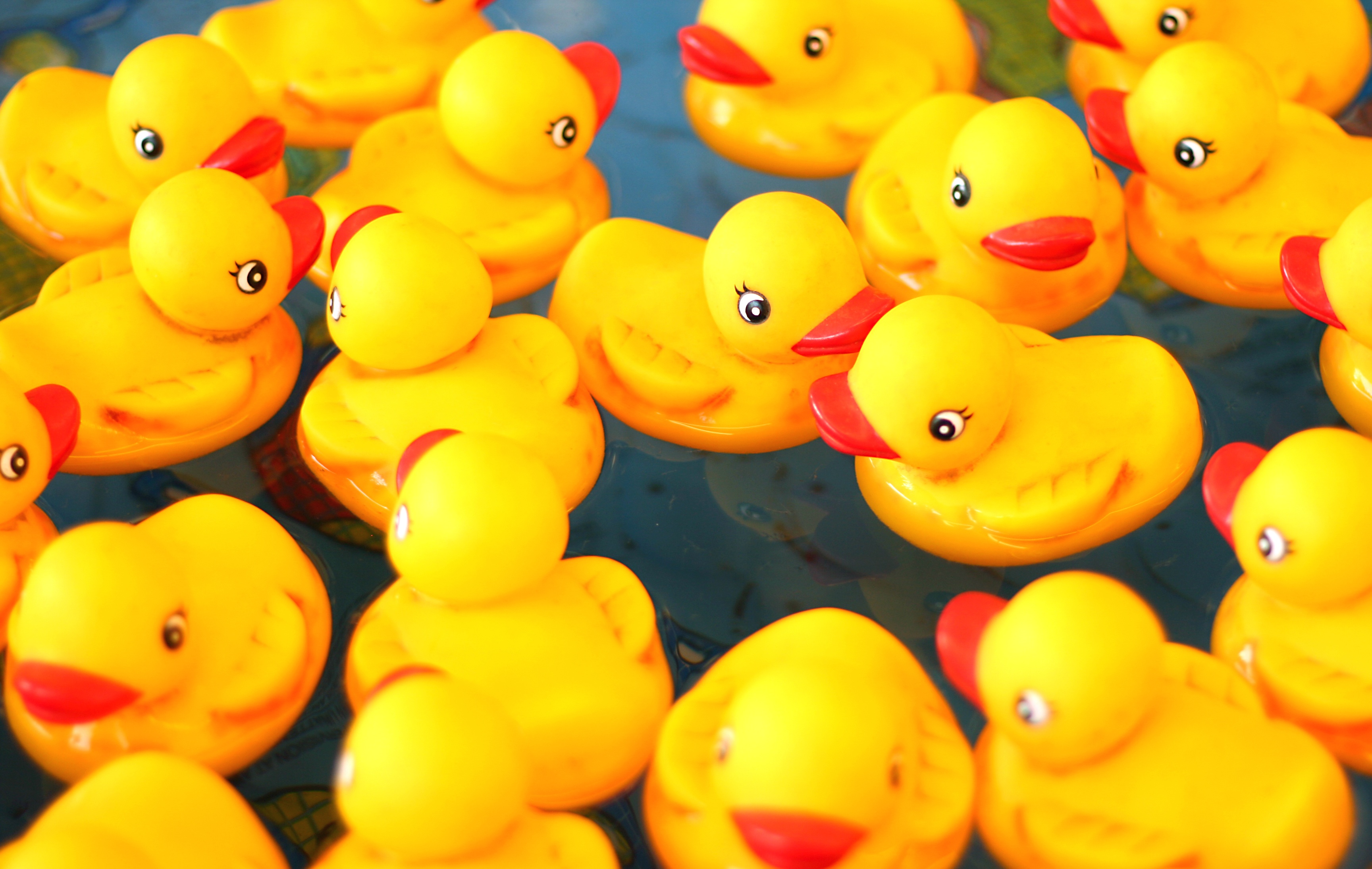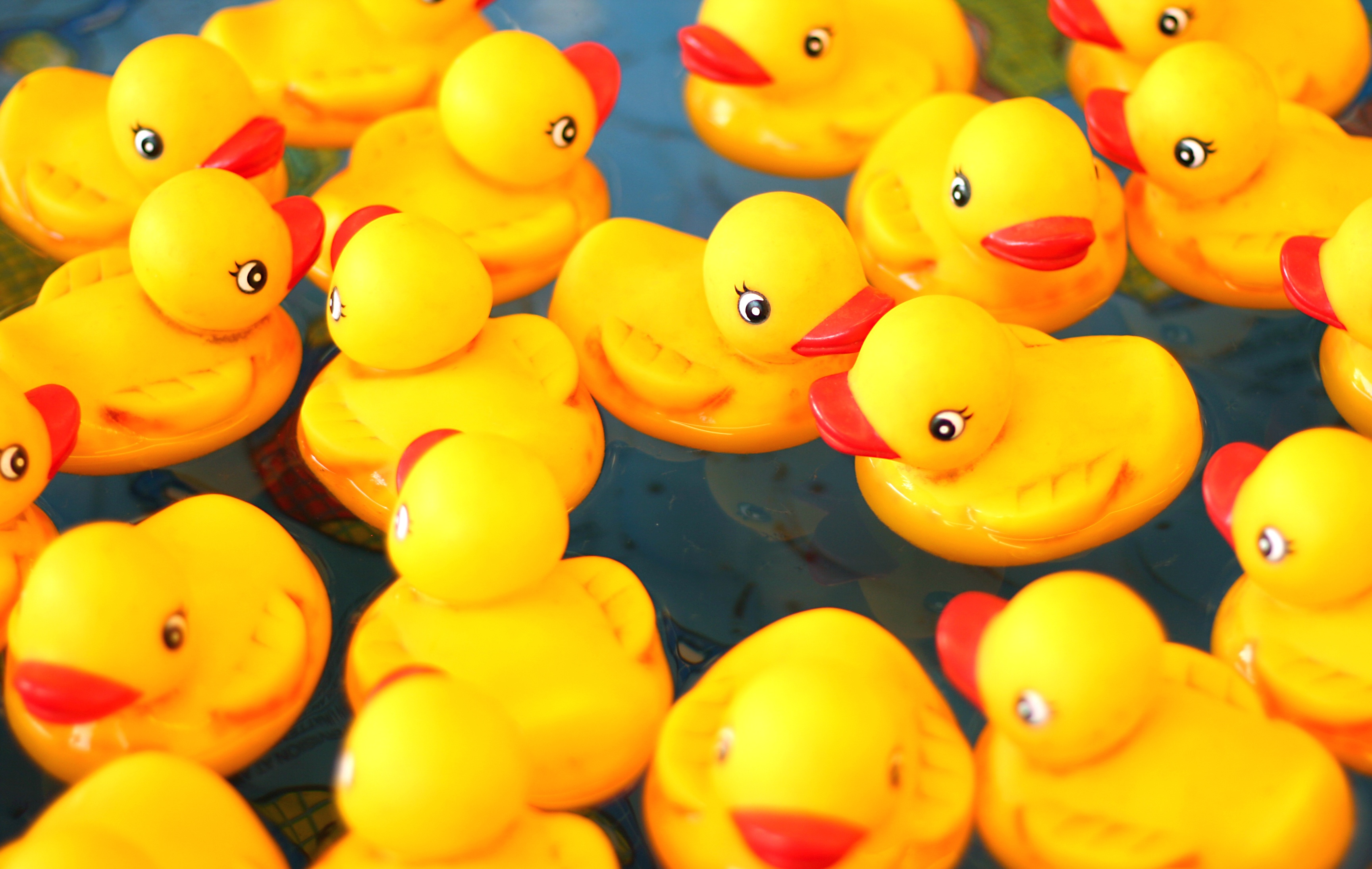
It may sound completely quackers (and it might also sound like the bonkers plot for the latest niche horror flick), yet despite all the following flannel, scientists have recently suggested that rubber ducks could, potentially, manifest deadly bacteria inside their traditionally non-threatening vivid yellow exterior.
Admittedly, when you’re compiling a list of some of the most innocent, harmless and ostensibly inoffensive things in the world, it’s fair to say that rubber ducks would more than likely make any final cut; along with picnic-loving teddy bears, cute puppies and Ed Sheeran. Indeed, the squeaky clean image of the traditional rubber duck has long been seen as sacrosanct and beyond any form of derision. That is until now, however.
According to a group of eminent boffins from the Swiss Federal Institute of Aquatic Science and Technology, the bath-time favourites from all our childhoods may not be quite as benign as successive generations have been led to believe. Apparently a recent study performed by said researchers cast serious doubt on the long-held premise that toy Anatidaes are in fact safe to handle, after conversely a collection of test toys were found to be rife with bacteria; concealed within the dark recesses of their rubbery shells.
And while harmful germs which could, theoretically trigger both eye and ear infections, are a cause for concern, they pale somewhat in comparison when talk turns to the prospect of Legionnaires’ disease. With children, understandably named as the most vulnerable demographic, alarm bells suddenly start ringing when legionella bacterium (possibly) comes into play.
Quack Team of Researchers Make Shocking Discovery in the Bathroom
The results of the study carried out by the Swiss scientists has been published in the respected journal, Biofilms and Microbiomes, where it has gained traction in recent weeks. The research conducted discovered that potentially harmful bacteria was found in some 80% of the rubber ducks tested, manifesting in the slimy film which had collected over a passage of time inside the hugely popular bath toys. Pretty much all the examples analysed “presented dense and slimy biofilms on the inner surface”, the study highlighted, going on to underline that; “Environmental exposure to bacteria and fungi is not necessarily bad for human health and may indeed even strengthen the immune defence.”
However as is well-documented, along with so-called ‘good bacteria’, there’s always a risk of bad bacteria getting a footing where least expected; and most certainly rarely observed in the case of rubber ducks. Indeed, the severity of the findings was flagged up by the subsequent report which continued; “Bath toys are typically used by children, who are potentially sensitive and vulnerable users.”
Drawing the public’s attention to the underlying fact that ‘squeezing water (containing unseen chunks of biofilm) into each other’s faces at bath time’ is universally acknowledged behaviour, such otherwise innocent actions could result in eye, ear, wound or even gastro-intestinal tract infections, according to the scientists. The bacterium levels were exposed in the aftermath of the researchers having dissected 19 rubber ducks which had been facilitated at bath time, and thus performed what they described as ‘controlled experiments’ on 6 identical toys under laboratory conditions.
And of course the one bacterium which stood out more than anything else was the ever dangerous legionella bug, which can lead to the potentially fatal lung condition we know as Legionnaires’ disease. As a timely reminder, the initial infection takes root – and is thereafter spread – once an individual host unwittingly inhales droplets of water containing the bacterial form, which grabs the bigger headlines when typically generated via hot tubs, water storage systems and even air conditioning units.
Responding to calls as to what to do with this knowledge, the research team told worried parents that they shouldn’t necessarily panic, and instead adopt a more stringent and regular cleaning policy with regards to rubber ducks (targeting their internal construct), or if they were that fearful to simply discard older ducks and replace with new ones on a more regular basis.






